Scottish Shelf Model. Part 6: Wider Domain and Sub-Domains Integration
Part 6 of the hydrodynamic model developed for Scottish waters.
Results
This section presents plots of examples of the particle tracks and of the connectivity matrices.
- FMA separation and connectivity matrices
Not all of the FMAs contain a salmon farm - some are historical and represent old/disused other marine sites - but have been kept in case the licences are re-established. The separation matrix is available as a spreadsheet.
The maximum separation between FMAs (taken as a simple direct separation using plane geometry) is 662 km, between the southern FMA on the mainland and the north of Shetland. From the climatology run the residual currents near the shelf edge are directed towards the NE and have a maximum velocity of 25cm/s, generally much smaller residual currents will be present nearshore, where the FMAs are located. At 25cm/s a distance of 324km could be covered in 15 days, however much smaller distances are more likely. At this time the results are for examined for the probability of a particle moving from one FMA to any other (including self-recruitment).
Figure 12 shows particle tracks for the January 35-day virus runs where the particles are released at surface, mid-depth and bottom. Each panel represents a sub-division of all the particles between 10 processors (as discussed in section 5.2.2). The first 9 processors have been used to each calculate 15,000 particle tracks; 150 particles released at 100 different release locations for each case. The 10 th processor tracked the remaining released particles (making a total of 146,550 particles). A final run was carried out for 3 release points (450 particles) which were not moving within the grid. The surface releases are shown in red, mid-depth are green and bottom are black. The tracks for particles released at different levels do not differ substantially, apart from the random walk component, because the particles move freely through the water column, unlike the sea lice larvae which are constrained to stay in the surface layer.
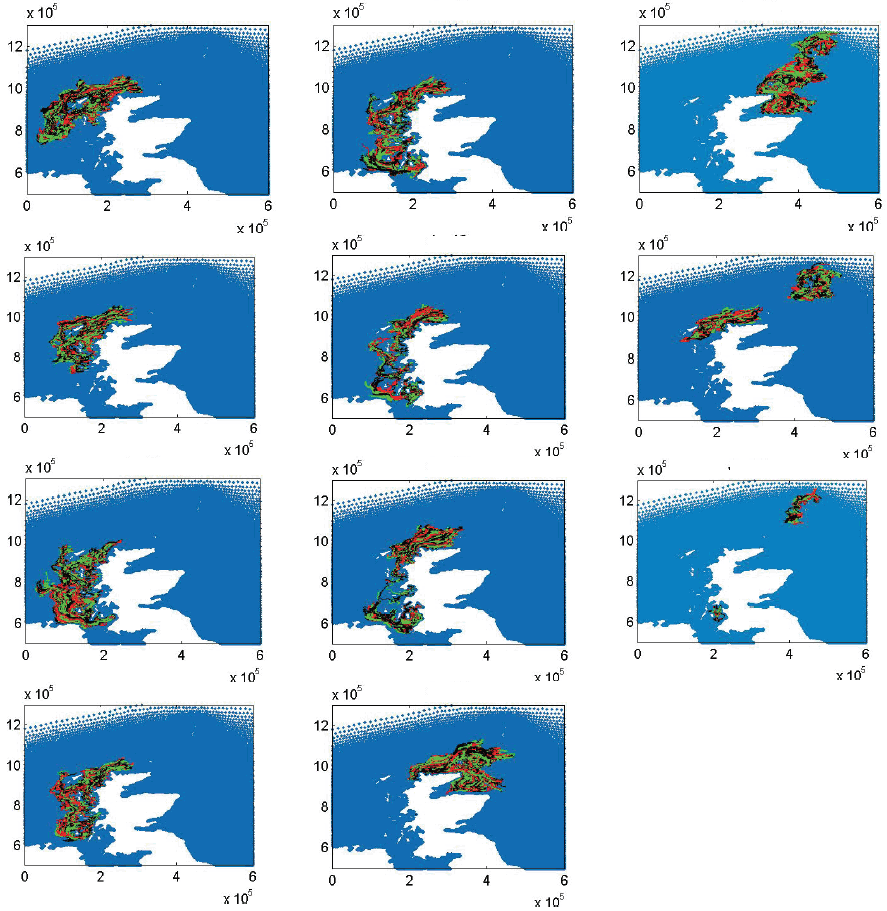
Figure 12: Particle Tracks for the January 35-day virus runs: red = surface release; green = mid-depth release; black = bottom release
- Sea Lice Connectivity
Figures 13- 16 show different plots of the connectivity matrix for the sea lice runs for each season: January, April, June and October. The left hand panel plots the probability of a particle being found in FMA j, from original release at FMA i. The right hand size is the mean probability of capture over the whole infectious period. The colour bar is in 10% intervals. It may be seen that most coloured pixels lie on the diagonal, representing self-recruitment. A few particles move to an adjacent FMA.
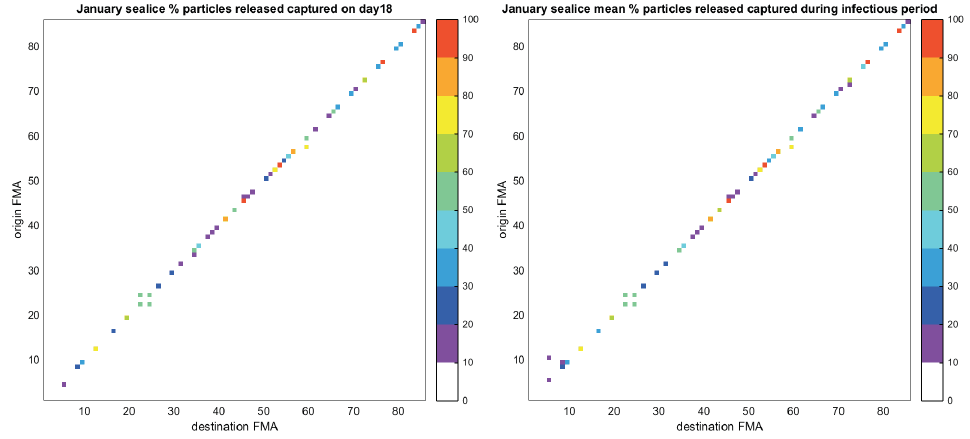
Figure 13: January sea lice connectivity indices: left panel - end of run; right panel - mean over infectious period
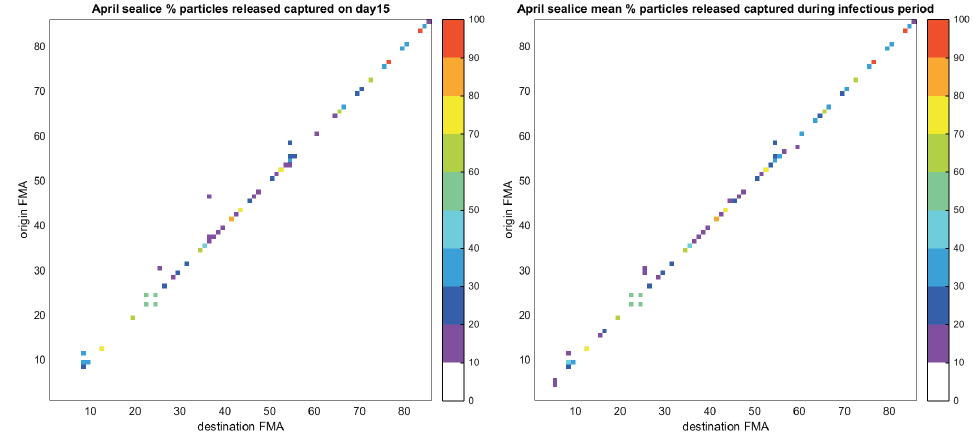
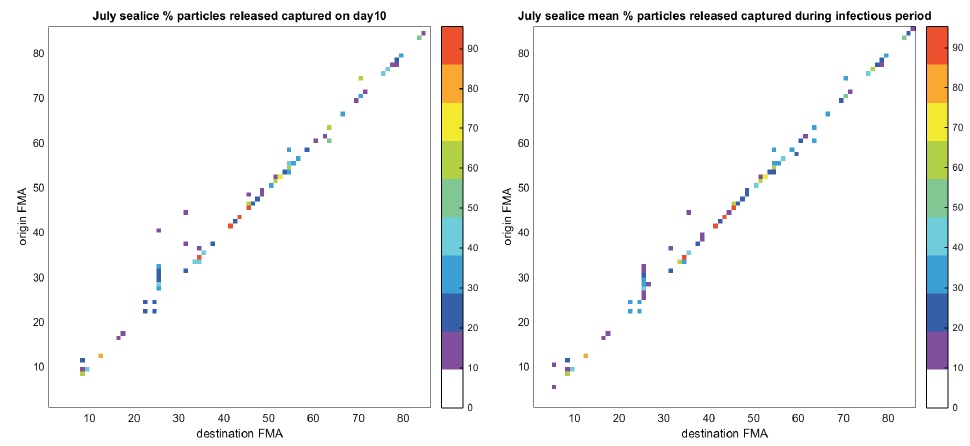
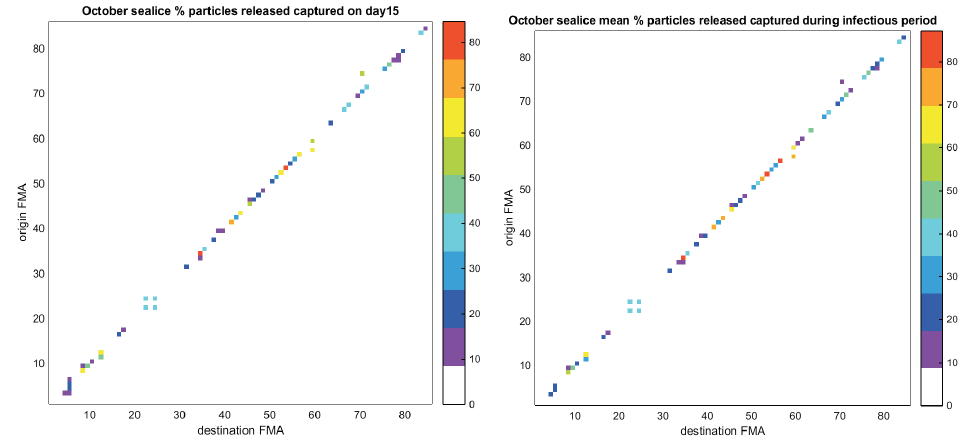
Figure 16: October sea lice connectivity indices: left panel - end of run; right panel - mean over infectious period
Particles appear to move further from their original positions in July and least far in January, despite the fact that the January tracking period is longest and July the shortest.
Figure 17 shows the 0/1 flags indicating whether there is at least one particle captured at the target from the origin FMA, over the whole period. This is more sensitive to only a few particles being captured than the previous figures so it can be seen that seen that there is some exchange between the Inner Hebrides ( FMA numbers ~40-50) and the Western Isles (64-86) which are adjacent areas with similar latitude.
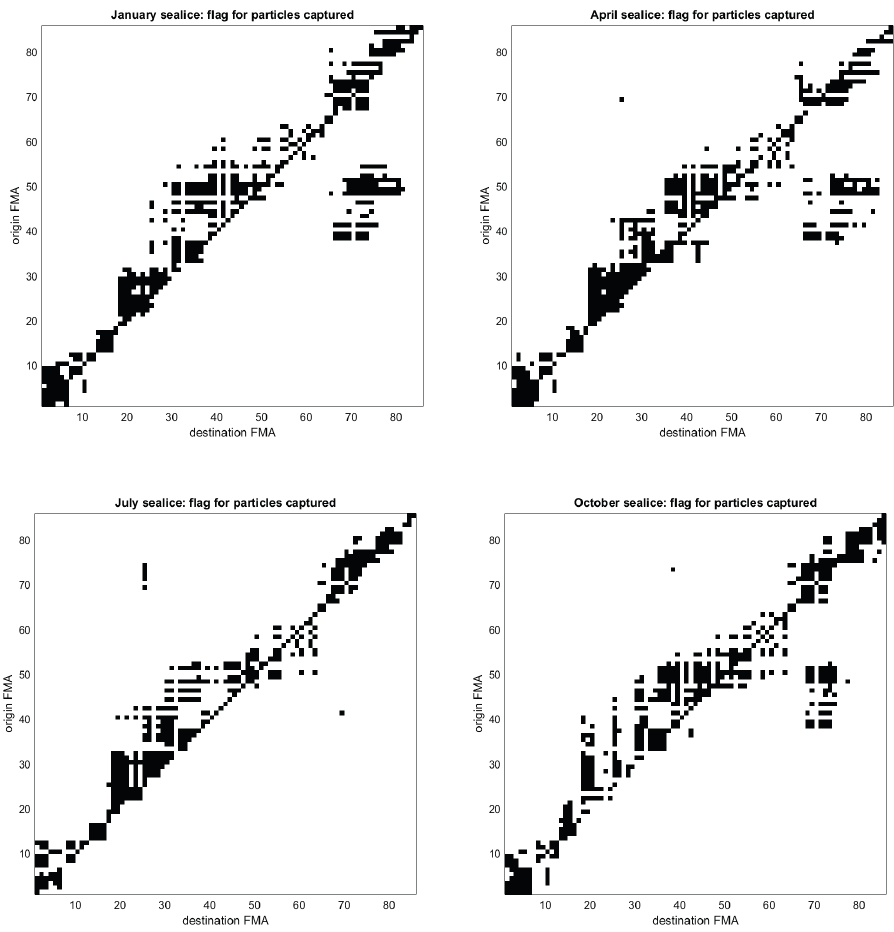
Figure 17: Connectivity flags for sea lice: top left - January; top right - April; bottom left - July; bottom right - October
- Virus Connectivity
- ISA Virus
The following figures show results for the 1 st 3 days of the virus-tracking period, representing the viable infective period of the ISA virus. This is a very short duration virus so less connectivity between adjacent areas is seen.
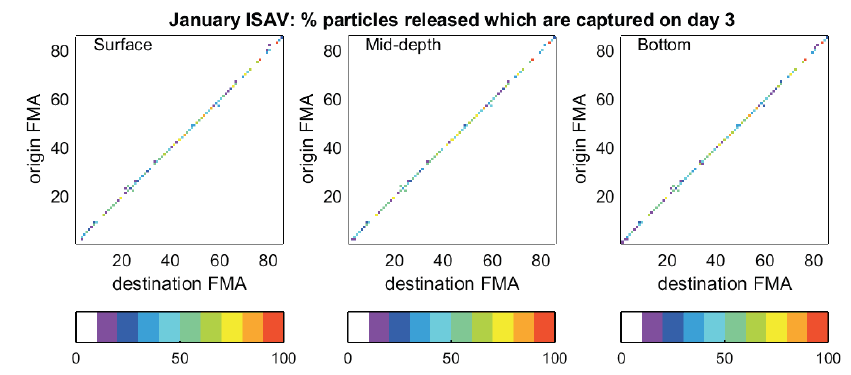
Figure 18: January ISAV connectivity indices: left panel - surface; centre - mid-depth; right - bottom
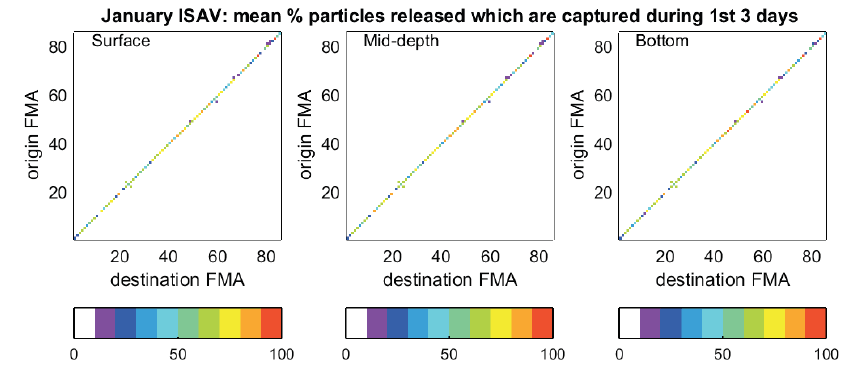
Figure 19: January ISAV connectivity indices: left panel - surface; centre - mid-depth; right - bottom
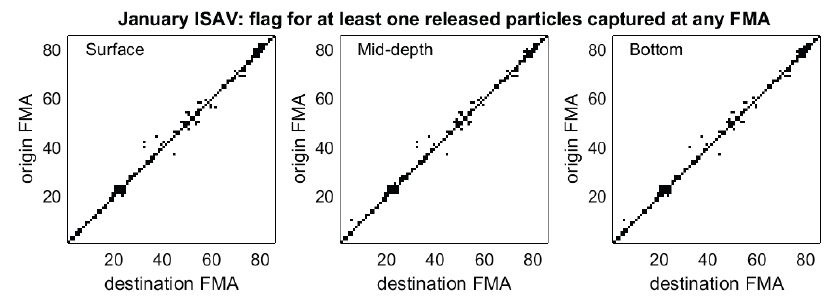
Figure 20: January ISAV connectivity flags: left panel - surface; centre - mid-depth; right - bottom
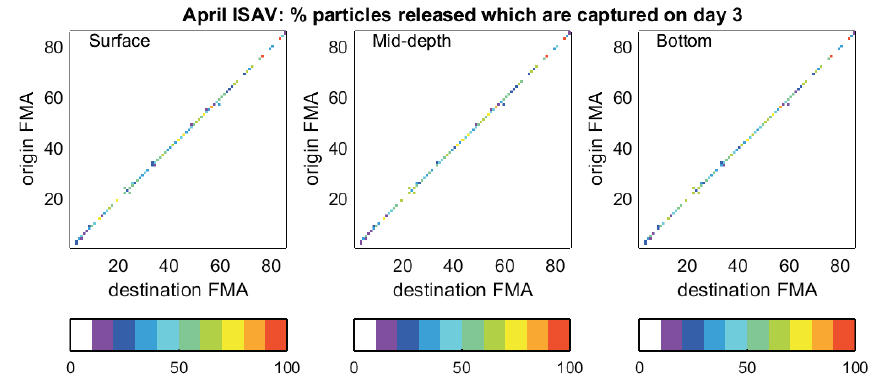
Figure 21: April ISAV connectivity indices: left panel - surface; centre - mid-depth; right - bottom
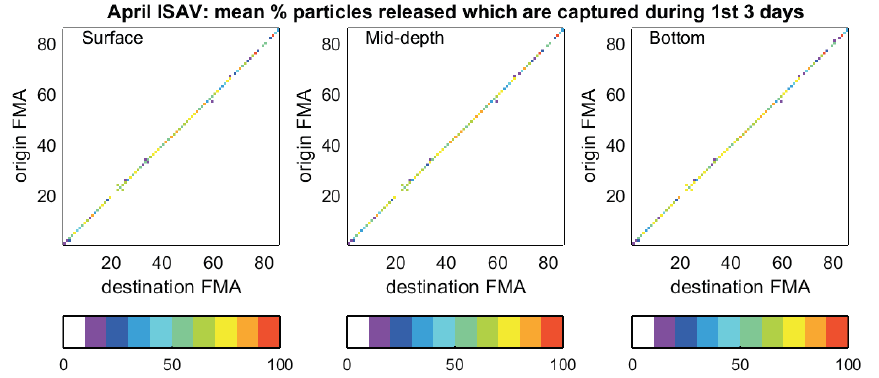
Figure 22: April ISAV connectivity indices: left panel - surface; centre - mid-depth; right - bottom
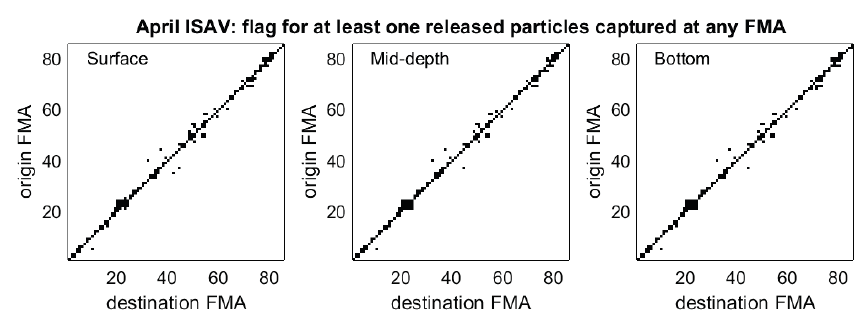
Figure 23: April ISAV connectivity flags: left panel - surface; centre - mid-depth; right - bottom
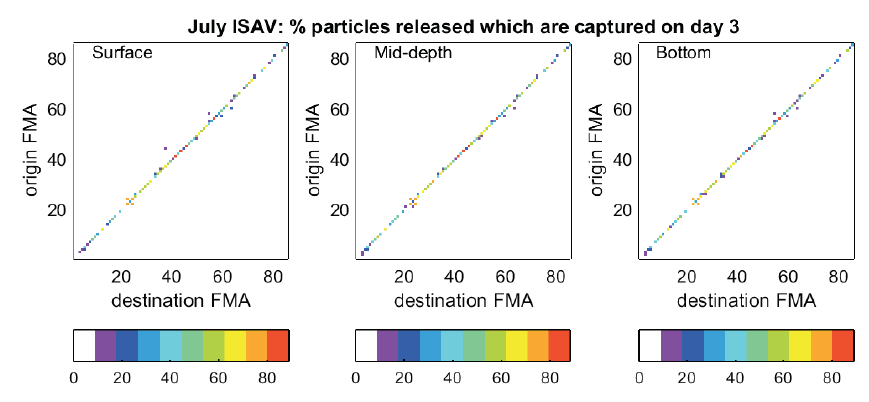
Figure 24: July ISAV connectivity indices: left panel - surface; centre - mid-depth; right - bottom
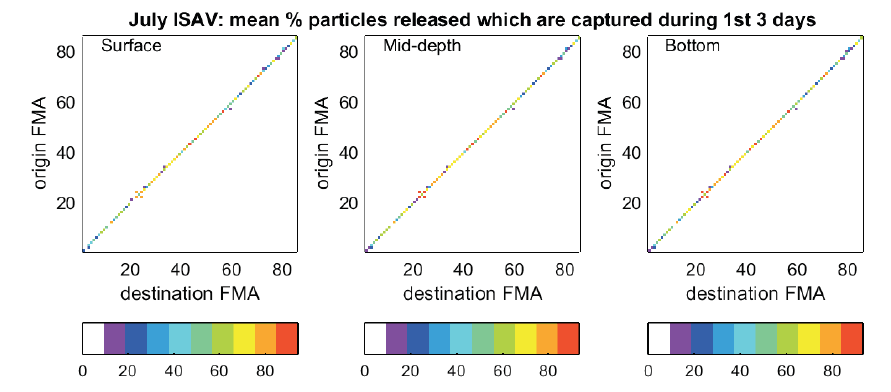
Figure 25: July ISAV connectivity indices: left panel - surface; centre - mid-depth; right - bottom
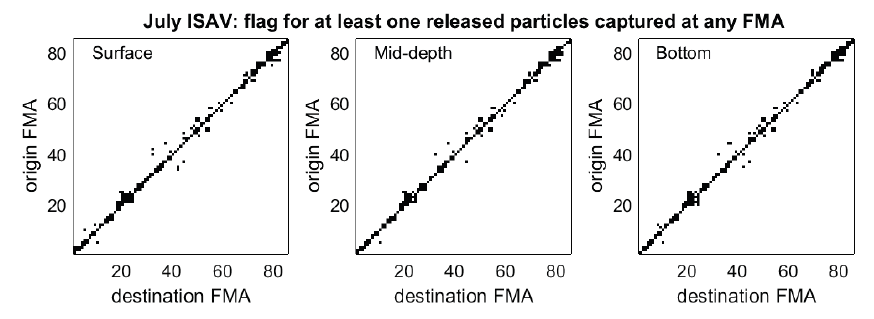
Figure 26: July ISAV connectivity flags: left panel - surface; centre - mid-depth; right - bottom
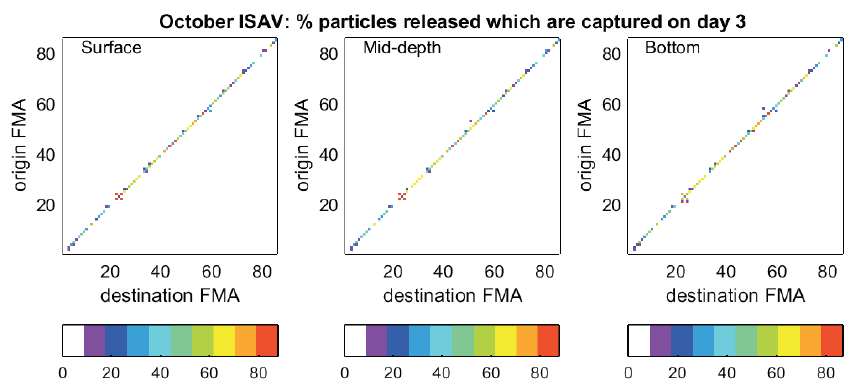
Figure 27: October ISAV connectivity indices: left panel - surface; centre - mid-depth; right - bottom
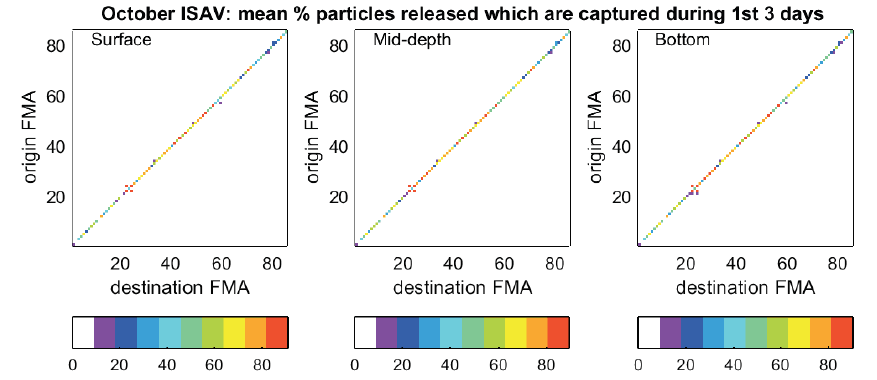
Figure 28: October ISAV connectivity indices: left panel - surface; centre - mid-depth; right - bottom
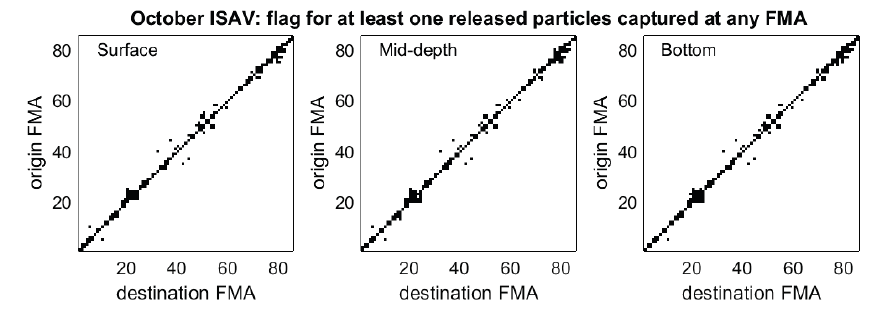
Figure 29: October ISAV connectivity flags: left panel - surface; centre - mid-depth; right - bottom
- IPN Virus
The following figures show results for the whole of the virus-tracking period, representing the viable infective period of the IPN virus. Due to the longer duration there is more connectivity, similar to the sea lice tracks. It may be seen that there is little difference between particle releases at surface, mid-depth or bottom.
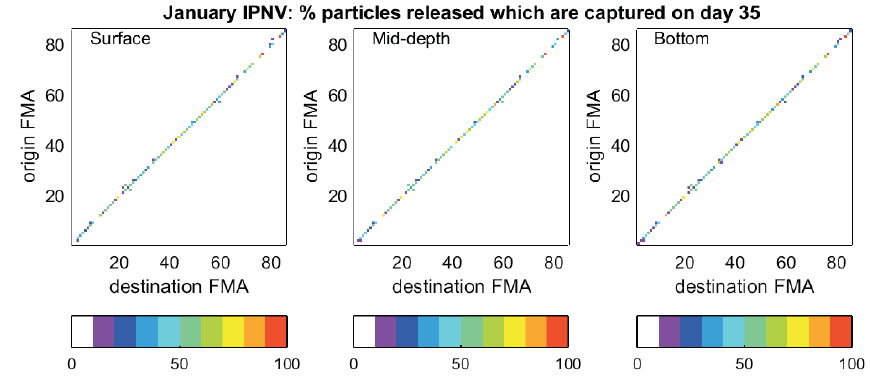
Figure 30: January IPNV connectivity indices: left panel - surface; centre - mid-depth; right - bottom
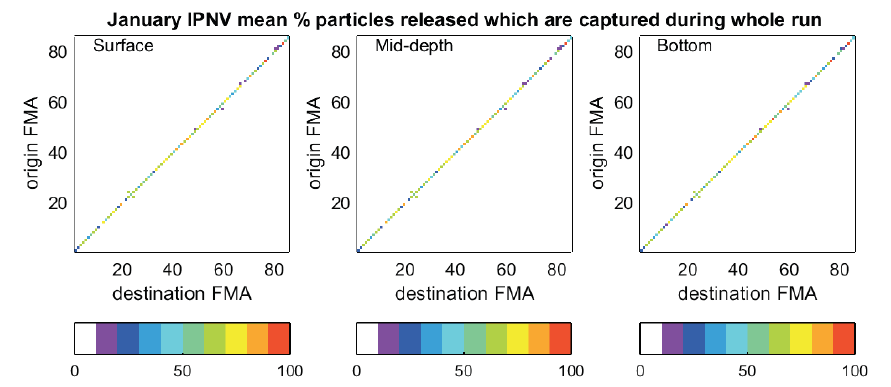
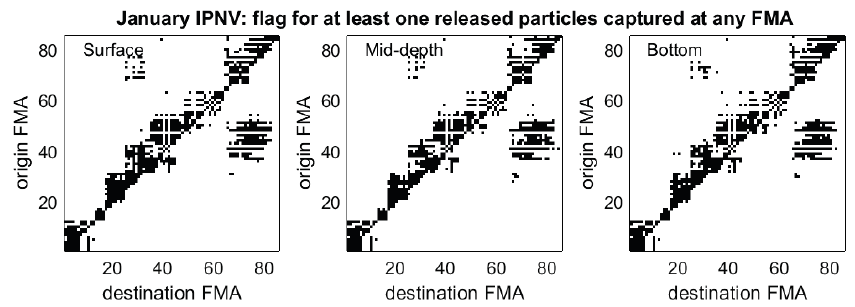
Figure 32: January IPNV connectivity flags: left panel - surface; centre - mid-depth; right - bottom
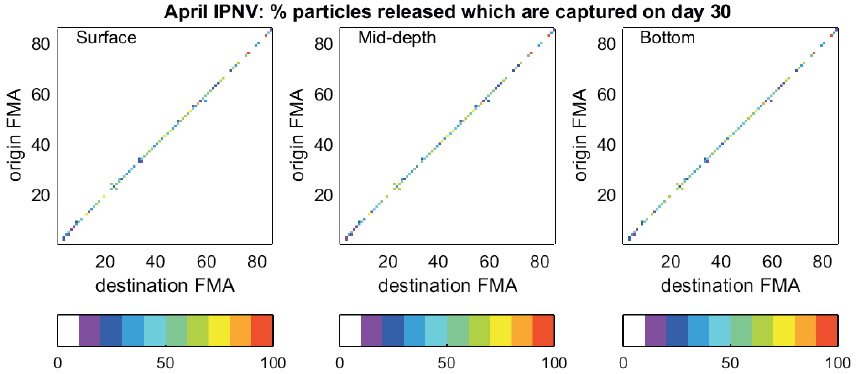
Figure 33: April IPNV connectivity indices: left panel - surface; centre - mid-depth; right - bottom
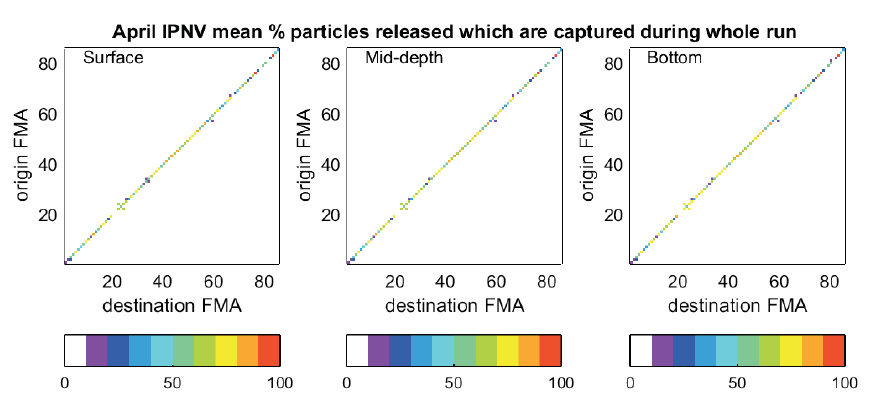
Figure 34: April IPNV connectivity indices: left panel - surface; centre - mid-depth; right - bottom
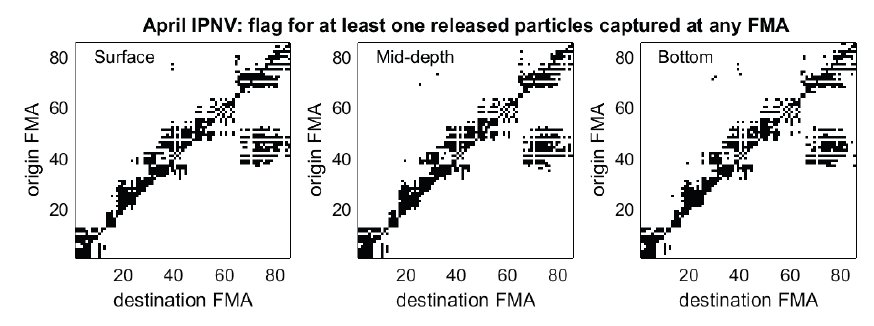
Figure 35: April IPNV connectivity flags: left panel - surface; centre - mid-depth; right - bottom
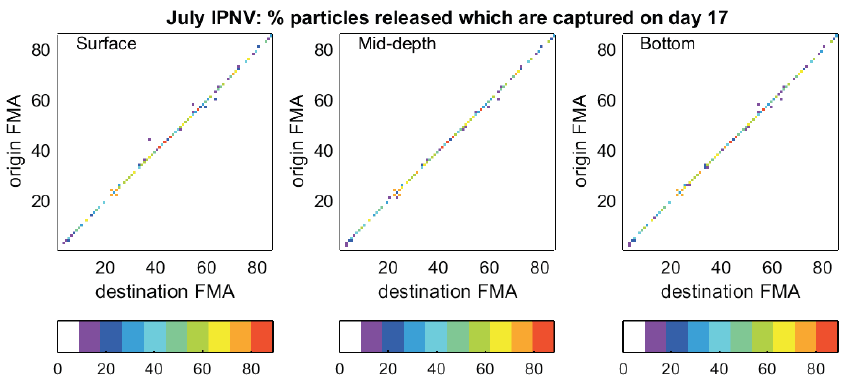
Figure 36: July IPNV connectivity indices: left panel - surface; centre - mid-depth; right - bottom
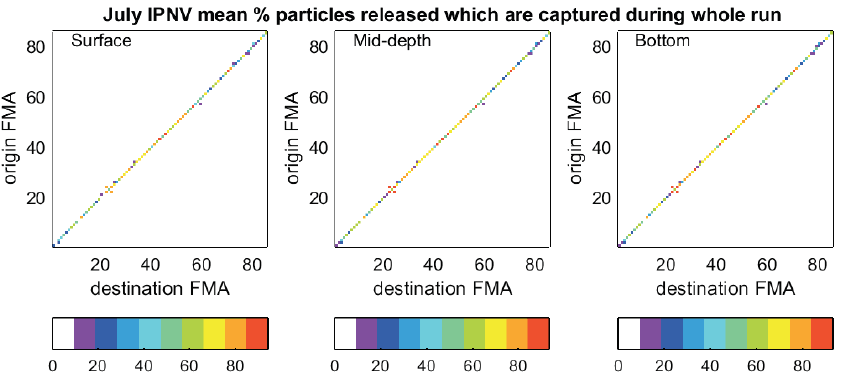
Figure 37: July IPNV connectivity indices: left panel - surface; centre - mid-depth; right - bottom
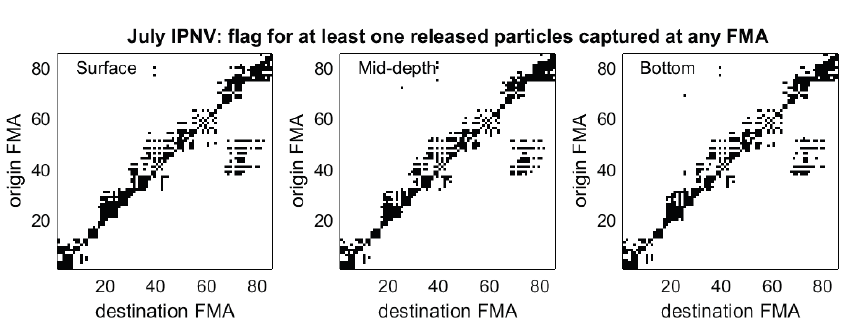
Figure 38: July IPNV connectivity flags: left panel - surface; centre - mid-depth; right - bottom
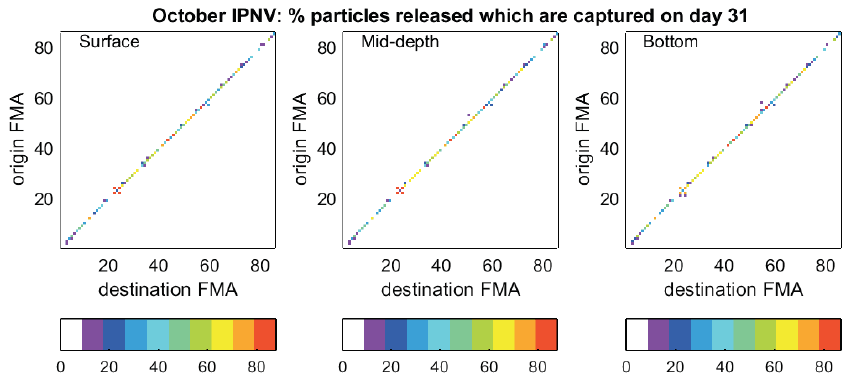
Figure 39: October IPNV connectivity indices: left panel - surface; centre - mid-depth; right - bottom
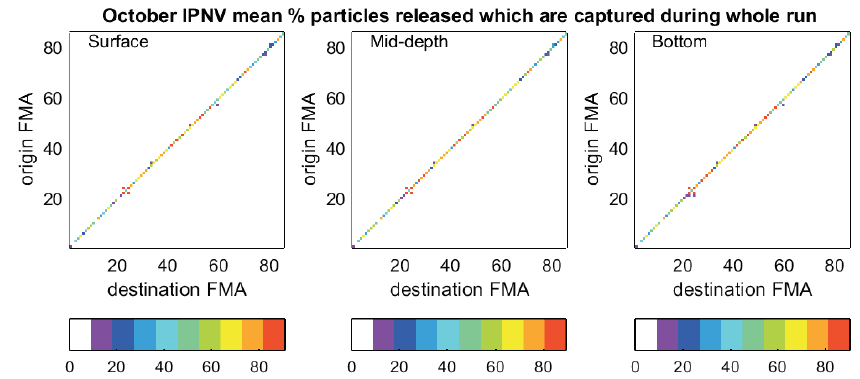
Figure 40: October IPNV connectivity indices: left panel - surface; centre - mid-depth; right - bottom
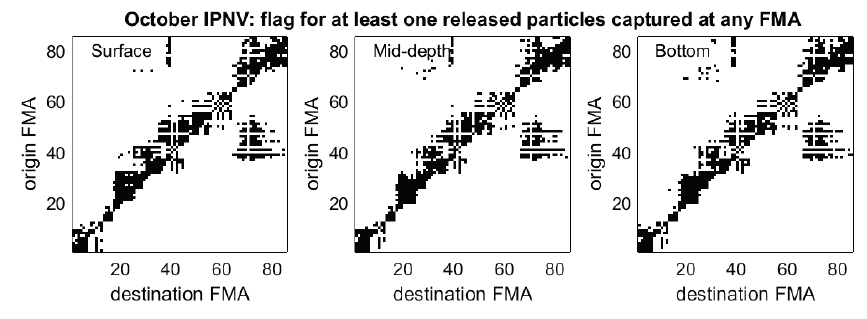
Figure 41: October IPNV connectivity flags: left panel - surface; centre - mid-depth; right - bottom
Contact
There is a problem
Thanks for your feedback